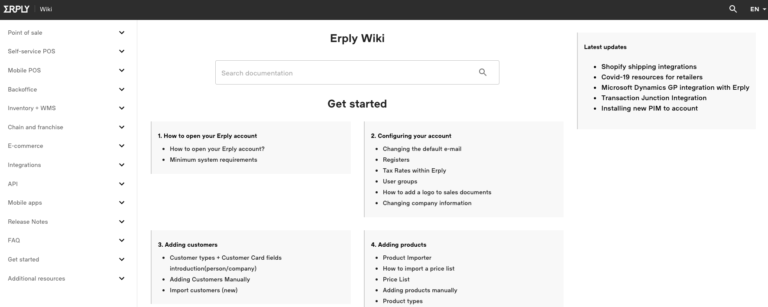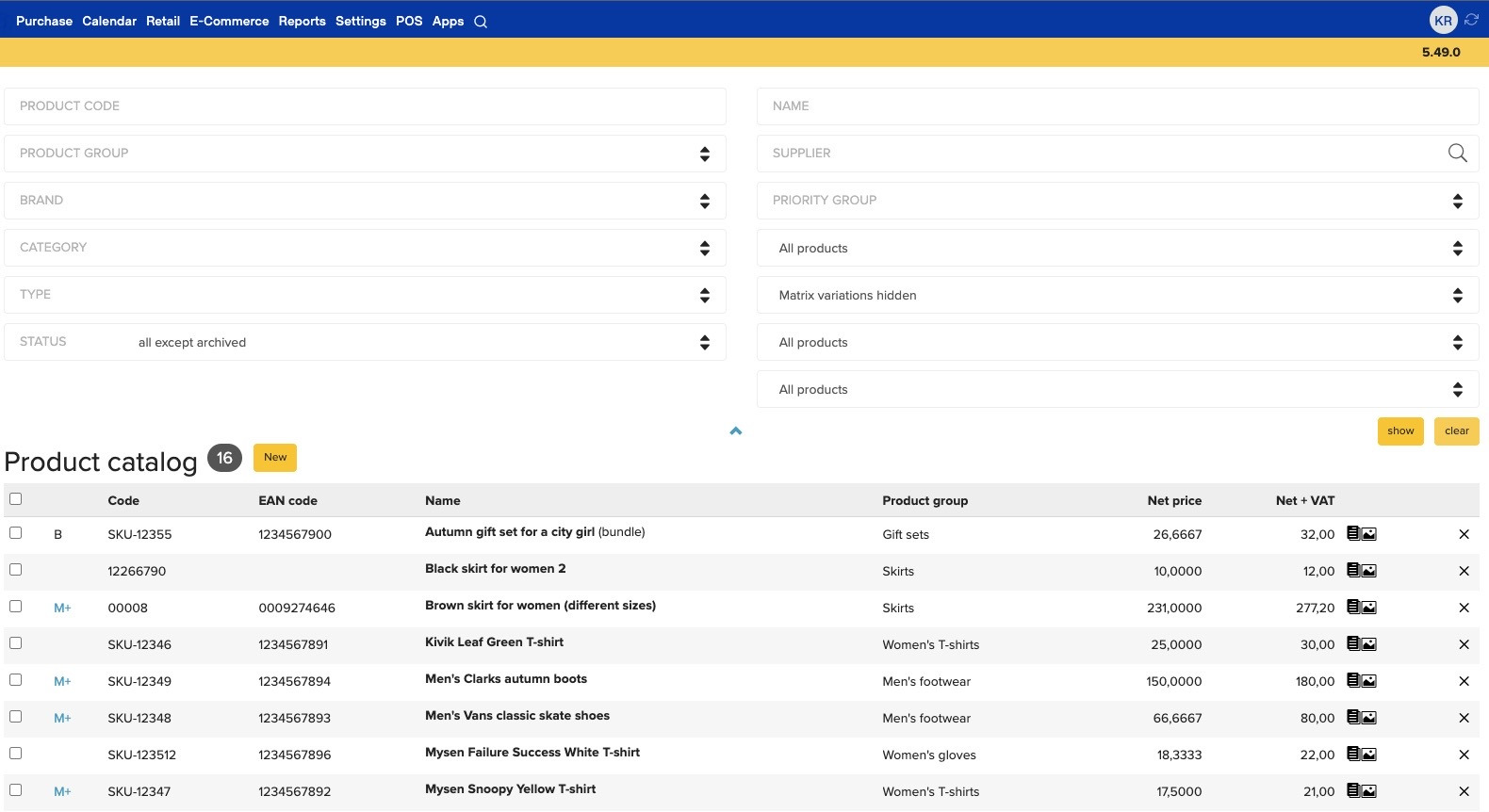The earliest days of warehouse management used simple means of counting, such as abacuses or pen-and-paper. Even today, you still find warehouse workers counting fingers when taking stock.
In fact, most business inefficiency problems stem from the warehouse. There is a lot of unnecessary running around; time spent looking for things, rickety systems, unpleasant surprises – and a whole lot of pencil pushing, of course.
This all causes problems in the warehouse, and problems in the warehouse mean numerous stocktaking.
The biggest issues are caused by the differences in actual stock inventory and the stock inventory displayed on the software. Thus, empty promises are made to customers; while the products-in-question are left unaccounted for.. Naturally, these hitches in the workflow cause both workers and employees to be disgruntled.
Do you get signals from your warehouse about the numbers not matching up, missing goods, or fed up workers? Time to upgrade your WMS.
What happens when you change WMS software?

Warehouse efficiency and accuracy go up when you change WMS software to one that better suits your business. A brilliant example of software change is Moosejaw, an American outdoor recreational apparel and gear retailer, who felt pressure to change its sales processes. They were past the pencil-and-paper era in the warehouse, but since their business started rapidly expanding – particularly due to e-commerce – it mainly affected their warehouse operations. Moosejaw needed a stronger WMS to keep up with its increasing sales volume. Two years after Moosejaw started using a WMS, they had expanded their product range by 15,000 items. The system allowed them to work fast, fulfill orders promptly, and minimize employee errors.
It is no less important that their new WMS was simple and could be easily mastered by the employees. Everything was covered, including product purchase orders and admission of the goods, inventory transfers, orders assembly, deliveries, returns, and stocktaking.
The biggest and most notable effect of the new software to the company was that labor costs decreased by 20%. The WMS streamlined manual stocktaking, increased stocktaking accuracy by 98%, and increased distribution accuracy by 0.3%. Two years later, Moosejaw announced 99.7% stocktaking accuracy.
The change helped the success of a retailer so much that it didn´t go unnoticed by the big dogs. Last February, retail giant Walmart bought Moosejaw entirely, paying 51 million dollars for it. Today, the well-established business and WMS operate under new management just as successfully.
Who needs WMS and what problems does it solve?
The short answer is that a WMS is suited for any business that wants to improve their processes. It could be a small company that has used Excel sheets till now, as well as a large enterprise that wishes to improve the work organization and reduce errors.
Are you familiar with a situation where a purchase order does not match the amount or description of received goods? You won’t have that problem with a WMS – the information is always stored in the same place where it was created. This means that if a discrepancy is found in the warehouse, it can be quickly identified and the purchasing team can settle the differences. The hitches in inventory processes no longer pile up on the last link of the chain — the warehouse — eliminating the need to frantically search for lost or unsent items.
Manual processes always produce errors, it’s only human. They also involve delays, duplicate entries, and time-consuming coordination of documentation. The right WMS will eliminate these errors to streamline your business and prevent the need for repeat stocktakes.
Avoid reputational damage
The fuel retailer Mentum, operating in the Baltic states, claims that after implementing Erply WMS, there is way less confusion and errors in their warehouse. In the past, the company struggled with the occasional missing inventory. After implementing Erply they reported that no mistakes passed the system, including inventory tracking and distribution.
The warehouse employees quickly became accustomed to Erply. Some still insisted that using pen and paper would be more convenient, but after getting a handle on the system, they found that Erply streamlined their workflow significantly.
Another interesting thing about Mentum is that Erply WMS also helped them control the market. Since they are the official sales representative of Castrol in the Baltic region, it is important that the batches can be identified and found quickly. The better the product, the more likely it is to be counterfeit. Mentum was able to use Erply’s warehouse tracking software to prove when good batches of oil were actually their product, and when bad batches were a knockoff. This helped keep customers happy and reenforce Castrol as a top-quality brand.
Erply WMS
What do you need to get a WMS?
With Erply WMS you decide whether you want the entire program or just bits of it to integrate with your existing software. You don’t need to replace everything – keeping your preferred employee management tools or accounting software, for example, is not an issue.
What changes does WMS make to your business?
- It prevents human errors – and those are inevitable.
- It makes your work processes more efficient.
- It relieves your warehouse from unexpected incidents because the work is planned, automated, and surprise-free.
How does a warehouse operate without WMS?

The goods are received by a man with a clipboard:
- He finds the purchase order
- He checks if the goods match the purchase order, drawing lines and ticks on paper
- He enters the differences on the computer
When it comes to pen and paper, the business owner can never be completely sure that something won’t disappear or won’t make it on the shelf – manual labor is completely based on trust. And if the trust is gone, then you need to start over completely, by checking everything manually as well.
But there’s more. 80% of big Estonian warehouses receive their goods like that. Although this description seems as easy as 1-2-3, manual checks are extremely costly in terms of time and resources. Managers must spend their time looking for items, going through the paperwork, and filling out that paperwork. Plus, there’s also human error involved.
Here is an example: Everyone can manage to place a purchase order. Yet confirming the order seems like an unnecessary extra manual step — 70% of managers pay little or no attention to it. However, data discrepancies occur easily, such as when some ordered goods don’t get sent. What could have been an easy resolution with a WMS ends up turning into missing or improperly sent items.
How does your warehouse operate with WMS?
The goods are received by a man with a barcode scanner:
- They take the scanner from the charger on the wall and see which purchase orders are about to arrive.
- Both the salesman and the warehouse employee check the shipment’s arrival time and current location.
- Warehouse worker identifies the order´s confirmation number from CMR – the accompanying document from the purchaser – and finds their own purchase order linked to it.
- The purchase order’s status is automatically updated when the goods are received. The salesmen can notify the clients about the arriving goods.
- The warehouse worker goes to the stack of boxes with the scanner and selects the most suitable product or box for them. The warehouse worker is notified if the product is not on the purchase order.
- Warehouse worker can choose whether they want to identify the products based on the barcode on the box or the barcode of the product. Scanning by box saves a lot of time.
- Depending on the number of scanners, several people can receive the goods simultaneously.
- Erply WMS allows products to be searched manually as well, if necessary.
- You can plan the order of your actions if needed – for example, if you’re in the middle of receiving goods, but someone needs to get their items quickly, the process can be easily discontinued.
- It’s easy for someone else to take over, and it’s a problem to take a break and start over – the scanner shows where the work was left off and what the next task is.
How does WMS work when the amount on the purchase order and the actual shipment don´t match? The program notifies you immediately, by sending out an email to all the parties involved in the order (and it is possible to leave out the parties not involved with a particular order).
It is important to emphasize that Erply WMS doesn’t overcrowd you with order details – all information easily searchable.
How the scanner brought prosperity to a Chilean retail giant
This spring, the retail businesses´ association National Retail Federation (NRF) wrote about the Chilean retail giant Ripley, who has operated in the sector for more than half a century. Ripley is one of the most successful companies in their wildly competitive home market in both Chile and Peru.
NRF wrote that a new era of growth and profitability began for the retail chain thanks to the addition of its automated warehouse system. The implemented WMS has significantly improved the efficiency of the chain, the capability, and productivity of the warehouse, as well as reduced operating costs.
The results: Warehouse´s productivity increased from 62% to 98%, order fulfilling accuracy increased to 99%, and the retail chain has achieved 40% overall cost savings. In light of this prosperity, they have opened several new warehouses. Now, even if WMS hardware and software aren´t the cheapest upfront, they are still more cost-efficient than keeping warehouse workers with a pen and paper on the payroll — resulting in more savings over time. The same warehouse staff took a two-week course to implement the system, and after only a couple of months the entire system was working without fail.
Have you opted for WMS?
If you are interested in introducing a WMS to your business, contact Erply and we will create exactly a system to fit your business.
You will need:
Hardware: scanners with the base and chargers, and Wi-Fi.
WMS software + courses. Warehouse work organization will change in the beginning but will fall into place in a few weeks. You can trust Erply with all this.
Here’s another tip: If the items don’t have barcodes, it would be wise to invest in a barcode printer. This makes stocktaking rare and accounting accurate.
Remember, this investment means so much more than its upfront costs: Your work organization improves, there will be less human errors, and the warehouse replaces a tedious workflow with efficient, precise warehouse workers – kind of like James Bond with a barcode scanner.
Lastly, something inspiring for you: Check out what the future of warehousing looks like through smart glasses.
Sign Up










